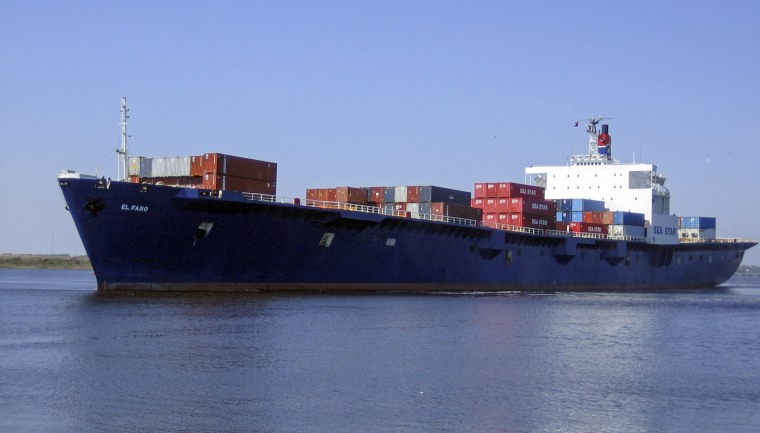While the U.S. Coast Guard on Monday announced the recovery of one body believed to be from the El Faro cargo vessel, another question looms about where exactly the ship sank.
Search and rescue teams have combed a 225-square-mile "debris field" off the Bahamas presumed to be from the ship, which was caught in the crosshairs of Hurricane Joaquin last week.
But the El Faro’s actual hull remains lost. Maritime experts say that for a vessel to vanish without a trace is uncommon thanks to modern-day technology.
Large ships use the Automatic Identification System, which has a line-of-sight range over a few miles and allows each vessel to view what marine traffic is like in its area — and avoid collisions.
Related: El Faro, Cargo Ship Carrying 28 Americans, Believed to Have Sunk
The technology is well-known enough that Somali pirates have reportedly followed the ships online to see where they’re headed and try to seize them. They might also purposely disable the tracking system so that the ship simply “disappears.”
Presumably, as the final distress call came in Thursday morning from the El Faro — which was traveling from Jacksonville, Florida, to Puerto Rico — the Coast Guard would have been vigorously tracking ship, said maritime industry consultant Peter Cope.
"This (AIS) technology allows anyone to scroll a particular area in the world," Cope said. "It's like activating a beacon on a life raft. It'll get picked up automatically. I imagine the Coast Guard would have been keeping an eye on that ship."
But for El Faro to go dark, there would need to have been a "catastrophic incident" for the ship to either lose power and — as the Coast Guard believes — sink some 15,000 feet in the heavy seas.
The Coast Guard said it is no longer looking for the vessel, although experts say without finding survivors, it will be difficult to know what exactly happened.

Coast Guard Capt. Mark Fedor said it appears the vessel lost power, making it extremely vulnerable to the Category 4 hurricane's 140-mph winds and 50-foot waves. It had 391 shipping containers aboard, weight that could make the ship top-heavy and prone to capsizing, he added.
Thirty-three people were on board: 28 Americans and five Polish nationals.
"These are trained mariners. They know how to abandon ship. They know how to survive in the water," Fedor said of the crew. "Those are challenging conditions to survive."
Related: New Search for Ship Lost Off Bahamas in Hurricane Joaquin
The El Faro departed from Jacksonville, Florida, on Sept. 29, when Joaquin was still a tropical storm. The ship was heading to Puerto Rico on a regular cargo supply run when it ran into trouble.
The crew made one last distress call to report that the ship had lost power, had taken on water and was listing 15 degrees but that the situation was "manageable," in their last communication Thursday morning, according to ship owner TOTE Maritime Puerto Rico.
They have not been heard from since.
Fedor said the National Transportation Safety Board and the Coast Guard would launch an investigation into why the ship ventured toward the hurricane and how it sank.
The body, which Fedor said was "unidentifiable," was discovered in a survival suit, but no other human remains or survivors were immediately located.
"We are still looking for survivors or any signs of life," Fedor said at a Monday news conference near Miami. "We're not looking for the vessel any longer."
Finding the vessel would be a Herculean task for salvage workers.
Still, at least locating the ship and trying to scan the wreckage with an underwater camera could yield important clues if no survivors or any significant debris are found. The damage to the hull would show what exactly the ship suffered in the hurricane and why it might have sunk, Noble said.
"If there are no survivors, they will need to find it," he added. "You can speculate all you want, but without seeing it or hearing from someone firsthand, understanding the damage will be difficult."
